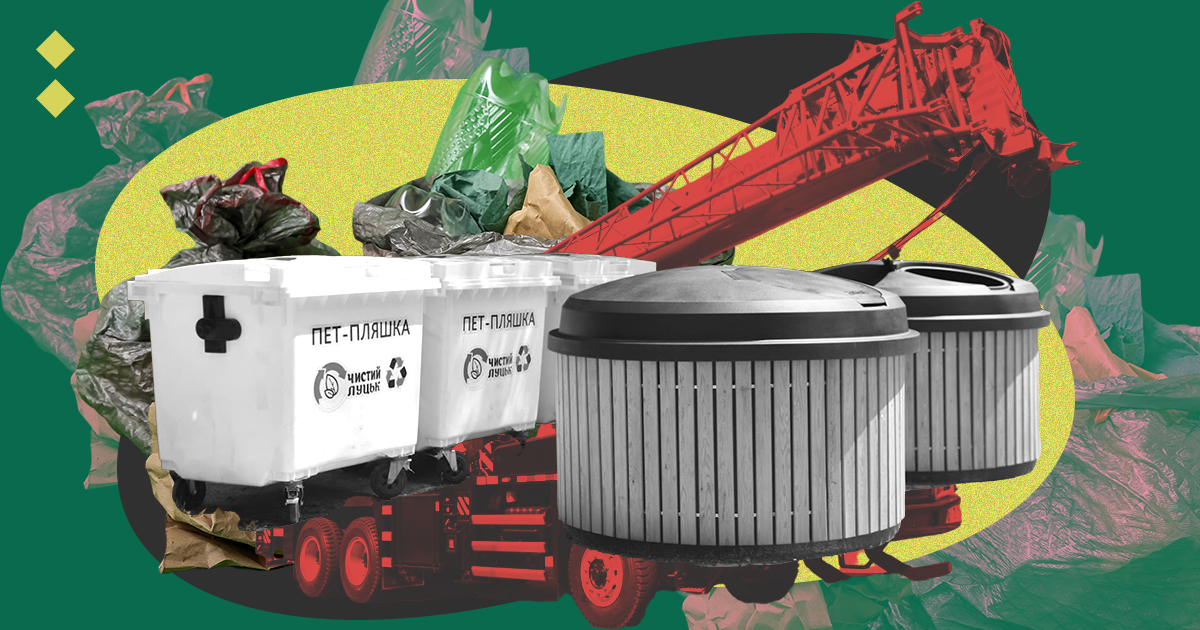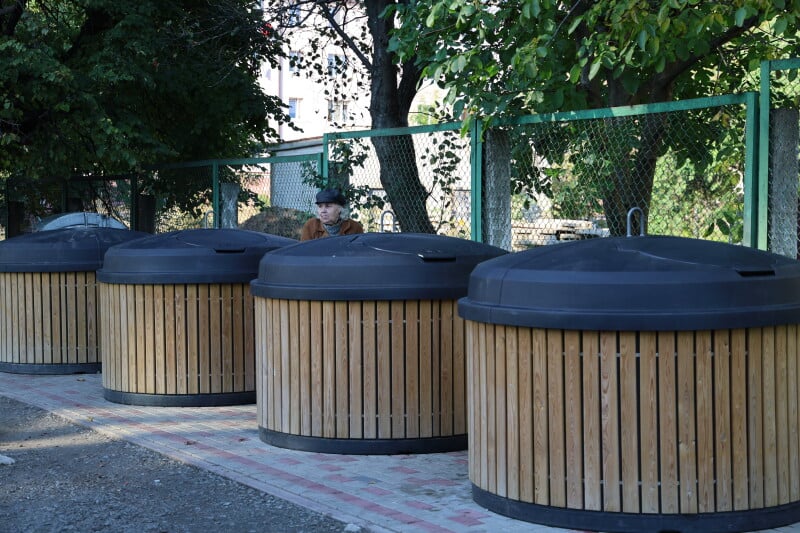Ukraine's western city of Lutsk joined the club of towns that installed underground trash containers. With the help of experts, Rubryka looks at Lutsk as an example to see whether this solution makes sense.


According to environmental experts, each person in Ukraine produces around 300 kg of household waste annually. In large cities, most of this waste ends up in regular trash containers, often placed right next to residential buildings. The problem with these open containers is that trash can be blown away by the wind or scattered by animals. They also tend to leak, causing foul odors and attracting pests.
To address the problem, many cities in Ukraine, including Lutsk, chose to install containers underground. For the second year in a row, Lutsk has been replacing the traditional open trash containers with semi-underground ones — the upgrade is part of a city program to replace old containers for collecting solid household waste.


Semi-underground garbage containers in Lutsk. Photo: Lutsk City Council
Lutsk Mayor Ihor Polishchuk shared that since the start of the program in 2023, the city has installed 60 underground containers at 29 locations. According to the official, about 30 of them were added this year. The containers have performed very well so far, with their structure proving to be durable and reliable. He pointed to a container on Veteraniv Street, which has been in use for over a year:
"No breakdowns. The bag inside hasn't been deformed or torn. So, the design is holding up well and proving its reliability," the mayor said.
A semi-underground garbage container in action. Photo: Lutsk City Council
A semi-underground container equipped with a special trash bag inside can hold up to five cubic meters (5,000 liters) of mixed solid household waste.
The city council calculated that the cost of one semi-underground container is comparable to the price of four to five regular containers, their covers, and a storage platform. From a financial perspective, semi-underground containers are a wise investment, aesthetically pleasing, and better for sanitation.
Other benefits include better waste management, maintaining hygiene, and ensuring environmental safety in the area. The city also has two special garbage trucks designed to service these containers.
Ihor Polishchuk inspects semi-underground garbage containers in Lutsk. Photo: Lutsk City Council
"It's definitely a modern, European approach. Many European cities use semi-underground containers," Polishchuk noted, adding that the program will continue.
"We've received many requests from residential buildings and housing cooperatives, and we'll do our best to keep installing them as long as resources allow," the mayor added.
Unloading of a semi-underground container. Photo: Lutsk City Council
"These containers can hold more waste at once, which is a big advantage," says Kateryna Raban, head of the public organization Zero Waste Lutsk. "I think they're a great idea, especially if installed in the right spots — like the city center or areas where open containers tend to create 'garbage dumps.' This will help keep the city looking clean for tourists."
However, the organization also raised some concerns about the widespread installation of these containers across the entire city. Their concerns include:
Volodymyr Martseniuk. Photo: Lutsk City Council
Five more locations are currently being prepared for semi-underground containers. Volodymyr Martseniuk, director of Lutsk Special Communal Transport Enterprise Lutskspetskomuntrans — a utility contractor in Lutsk handling waste management — commented to Rubryka that each container saves the company over UAH 100,000 (about $2,500)
"This is a significant saving. If we complete the program and replace all the containers, the city, and the company could save around UAH 35–37 million ($8.5–9 million – ed.) per year," Martseniuk noted. "It's cost-effective and efficient in terms of logistics and operations, reducing vehicle maintenance costs. Plus, we'll have better control with GPS monitoring."
Martseniuk also mentioned that these containers could be adapted for separate waste collection by changing the lid and adding three compartments. The base remains the same, meaning the same container could be used for both mixed and sorted waste.
"Most likely, we'll start trying this next year. For example, where there's a lot of plastic waste, we'll start using containers designed for that," he explained.
For now, the city has placed containers for plastic bottles next to the semi-underground ones, with plans to add glass recycling bins in the future.
Containers for PET bottles near the semi-underground garbage container. Photo: Lutsk City Council
Currently, if a housing cooperative in Lutsk wants to install this system, they must hold a meeting with the residents. The city council will then respond based on the meeting's protocol. What does this mean?
First, residents need to send a request to the mayor. The mayor approves funding for the location.
"But there's a condition from our side — co-financing. The housing cooperative will need to cover the cost of preparing the project documentation, which is roughly UAH 15,000–20,000 ($360–480)," Martseniuk added.
39 років тому аварія на Чорнобильській АЕС призвела до відселення людей із територій, забруднених радіоактивними… Читати більше
Recovery Camp is a psychosocial rehabilitation project for Ukrainian children that has been running for… Читати більше
Екологічна освіта, громадянська наука та цікава практика — складники ініціативи, яку втілили для молоді Краснокутської… Читати більше
A team of researchers has trained an AI model to see not just rubble in… Читати більше
У лікарнях Харкова та Ужгорода студенти під наставництвом психологинь, менторів та супервізора проводять для дітей… Читати більше
У Лубнах фахівці, які допомагають військовим, вчилися будувати довірливий контакт із тваринами, зокрема кіньми та… Читати більше
Цей сайт використовує Cookies.